The Haiti Community Foundation: The impossible made possible
03 Dec 2019
These remarks were delivered by Marie-Rose Romain Murphy of the Haiti Community Foundation (above) as part of the “Pathways to Power” Symposium, held 18th – 19th November 2019 in London.
Nelson Mandela once said: “It always seems impossible until it’s done.”
The story of the Haiti Community Foundation is a story of the impossible made possible thanks to the power of deep abiding love for Haiti, the power of shared vision and the power of community leadership and global solidarity. It all began after a life altering disaster…
- The 12th January 2010 Haiti earthquake killed 300,000 people and made 1.5 million individuals homeless.
- In the same year, Hurricane Thomas wiped out crops and created a hunger crisis.
- Also, foreign troops brought us cholera which killed thousands.
Haitians everywhere suffered what can only be described as a collective trauma. Our pain was evident for anyone and everyone who looked. We also somehow thought that perhaps, there was hope, and a chance to rebuild better. Ideas percolated. Then reality set in as: only 0.6% of Haiti’s 10 billion dollars in public-private funding went directly to Haiti’s businesses and organizations (based on a study by the Center for Global Development). 0.6%!
The writing was on the wall. It happened: community marginalization, increased dependency on foreign aid, the lack of national and international accountability. The building of a bottom-up “Haiti-based, Haiti-led, community centered community foundation for Haiti” was necessary. In fact, many of us realized that had we had a strong community foundation before the earthquake, it could have perhaps prevented not just the systematic robbery of our country’s funds, but also the crushing of our people’s hopes and dreams.
When no one seemed interested in setting up a community foundation for Haiti, a small group of Haitian activists (Caroline Hudicourt, François Chavenet, Tanguy Armand, Joyce Mathon Trotman and I – among others) supported by individual donors funders and “believers” rallied around the Community Foundation Initiative idea (including ESPWA, the GFCF, Inter-American Foundation, Puerto Rico Community Foundation, W.K. Kellogg Foundation and so many others along the way, like the Kenya Community Development Foundation and community foundations from Nebraska, Mexico, Brazil, Ottawa, Montreal – not to mention Community Foundations of Canada, Boston Foundation, NEAR Network). I remember speaking with Jenny Hodgson, GFCF Executive Director, for an hour a year after the earthquake in January 2011 and her saying: “Marie-Rose, we cannot not do it!” Our story resonated and many responded in the name of justice and solidarity.
We began a journey WITH our communities to seek answers that we didn’t have. We asked the community at every step of the way. Never assuming, never just telling them that “we were coming.” They were and are the experts. It’s their community. They know best.
What is a community Foundation? Did Haiti need a community foundation? How do we structure it? How do we name it? Only when we voted as a network and decided together would we then moved forward. We worked “tèt ansam”, or heads together, to select a pilot region and we then worked there. The Grand’Anse, a region of 500,000 residents that is key to Haiti’s agriculture and environment as one of its last green reserves, was selected. Grand’Anse leaders (Cheyner Depeine, Alcendre Léopold, Wisly Jasmin, Jean-Marie Pamphile, Foufoune Cemerzier among others) designed a regional process that many naysayers deemed impossible…they made it possible.
For two and a half years, leaders from all sectors in the regions’ 12 communes/counties, gave up their weekends and contributed their resources to plan together. At the beginning, we had such little money that it was laughable. Some leaders in faraway communities still walked five hours to have their say and be part of our movement. Community by community and finally the entire region set up their priorities. In the process, we collectively created an incredible human leadership infrastructure of over 600 leaders. It wasn’t easy work. We had to address our divisions along the way, along gender, colour, class and politics. It was at times painful. We did it though. We did it.
When the Grand’Anse was devastated by Hurricane Matthew in October 2016 this community leaders network sprang into action, helping those more impacted with local resources. We also interviewed 240 leaders to produce a community assessment. Based on this assessment, we designed Leve Kanpe (which means “getting back on your feet” in Creole) through which we strategically supported hard to reach communities left behind by international aid, and targeted the most vulnerable residents. We provided grants and technical training to our partners. Haitians helping Haitians. Through Leve Kanpe and other initiatives we served over 15,000 residents.
Our network is built as an inclusive platform for sustainable development. We are legally structured as a national network of regional funds with the core principle of not just “community and network building” but also of the very “nation building that our country so desperately needs.” Our network is local, regional, national and international and it makes decisions tèt ansanm, together, at strategic planning gathering.
Before I made this presentation, I sent it to our network members. One of them, Wisly Jasmin, told me: “Marie-Rose, as usual, it’s good, it’s great, but it’s missing something. You didn’t talk about the magic of community philanthropy. In order to make it happen, we all contributed. The members of the Regional Committees, the network members, our grantees and partners themselves. We all had to come together to make it happen.”
In a country like Haiti where communities have experienced, over decades, the keen loss of a sense of power over their lives and the direction of their communities, hope needs to be reignited again. Yes, development starts with humans: their dreams, fears, beliefs, and convictions.
The Haiti Community Foundation’s comprehensive, inclusive and bottom-up community planning process generated unprecedented community response, support and engagement because of its passionate emphasis on, and its deep investment in, the power of local communities and their leaders. In so many ways, our work has unleashed visceral enthusiasm and commitment because it has been about: building trust and confidence; connecting leaders within communities; connecting communities to other communities; urging local leaders to trust themselves again, and to take action.
In brief, our work has been impactful because it has leveraged Haitian communities’ yearning for a vision that includes them. Our work has been transformative because it has been relentlessly reconstructing hope.
Our story is still being written. We are still working on making the impossible possible… Join us!

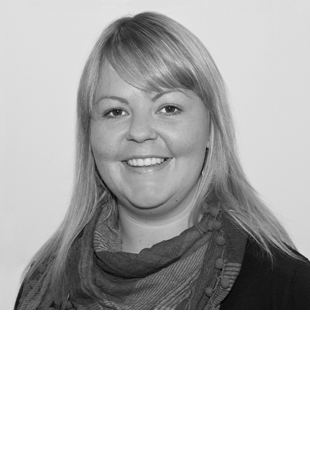
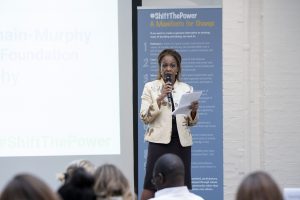
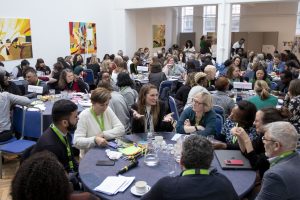
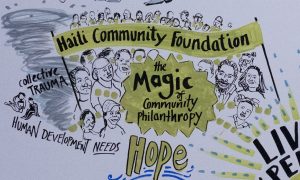
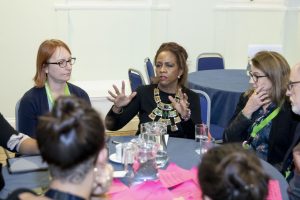
Inspiring and beautiful.
Keep up the faith !
Heartfelt thanks for your commitment to my homeland of Haiti.
Bonne présentation … compliment! J’ai eu l’opportunité de visiter le travail titanesque de votre équipe et de côtoyer les membres de vos communautés d’intervention. “chapeau bas”. vous faites un travail exemplaire dans des communautés difficiles, mais les résultats sont spectaculaires. Félicitations à vous et à toute l’équipe et bonne continuité.
G
Haití need people like you. Congratulations ?❣️
This is extraordinary; I’m very proud of all of you and of course particularly my elementary school copine Marie Rose Romain Murphy. I can also volunteer my time whenever you shall be in need; and also, my expertise in the domain of common delicate social and health issues, a plague affecting the healthy growth of our communities. I look forward to meeting you all in the near future. Once again, congratulations to you all, Haiti needs you, Thank you??
Bravo Marie-Rose et au comité, c’est tout in trajet!